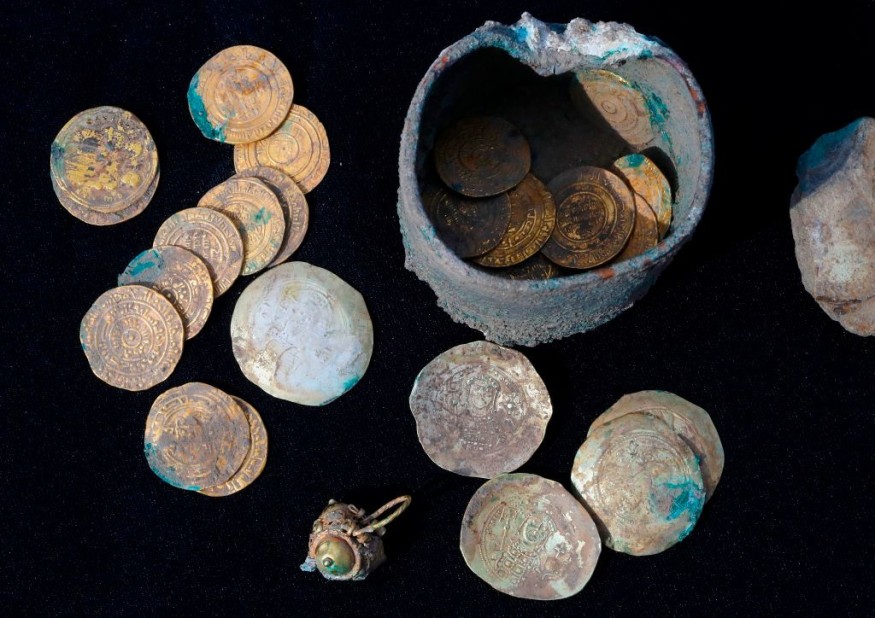A buried treasure with 44 Byzantine gold coins were found during an excavation activity in a nature reserve in Israel, most of the coins found dates back to the reign of Emperor Heraclius during the Byzantine Empire, also called Byzantium or the Eastern Roman Empire. It is an extension of the proper Roman Empire in its eastern provinces during the periods of Late Antiquity and the Middle Ages.
Byzantine Gold Coins Treasure

The treasure trove of 44 gold coins discovered inside a wall was likely from an owner who was fleeing the invading Muslim army at the time.
The discovery illuminates a potentially specific point in time when we can imagine the owner was concealing his fortune amid the threat of war, hoping one day he or she will return one day to retrieve his wealth, according to Yoav Lerer, the excavation director of the Israel Antiquities Authority (IAA), as cited by All Israel News.
Lerer adds that the coin hoard, weighing approximately 170 grams, was hidden within the base of an ashlar stone wall during the Muslim conquest. In addition, it also shed light on the Banias city economy during the last 40-year rule of the Byzantine Empire.
The treasure was found during an IAA-led archaeological excavations at Paneas, currently known as Banias, located in the Hermon River Nature Reserve in the Golan Heights. The excavations were also carried out by the Israel Electric Corporation which seeks to connect the Druze holy site, Maqam Nabi Khadr, to the country's electric grid.
The discovered Byzantine gold coins depicts a historic moment in the region of the Muslim conquest of the Byzantine Empire and the establishment of the Umayyad Caliphate.
IAA Director Eli Escusido stated the coin hoard is an "extremely significant archaeological find" as it dates back to an transitional period in history of Banias and the entire region of the Levant, as cited by ABC News.
In addition, IAA's Dr. Gabriela Bijovsky said the oldest coins in the trove dated back to the reign of Emperor Phocas, who ruled the Byzantine Empire between 602 A.D. and 610 A.D. Meanwhile, the newest coins emerged from the time when the Muslim invasion of the region later in the said century.
What is the Byzantine Empire?
The Byzantine Empire was considered to be a vast and powerful empire which can be traced back to 330 A.D., emerging at a time before the downfall of the Roman Empire and when Roman Emperor Constantine dedicated a "New Rome" in Byzantium, an ancient Greek colony, according History.com.
Although the western half of the Roman Empire fell in 476 A.D., the eastern half survived for over 1,000 years, paving the way for rich art tradition, literature, and learning, as well as serving as a military buffer between Asia and Europe. The Byzantine Empire fell in 1453 when the Ottoman Empire stormed its capital city of Constantinople during the rule of Constantine XI, according to prevailing literature and archival records.
© 2026 NatureWorldNews.com All rights reserved. Do not reproduce without permission.





